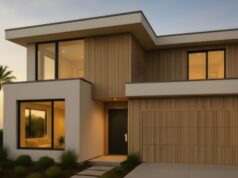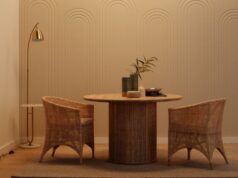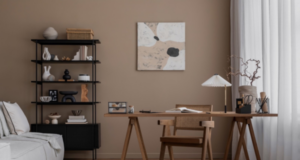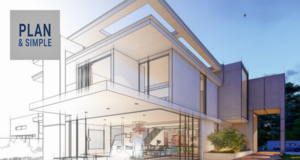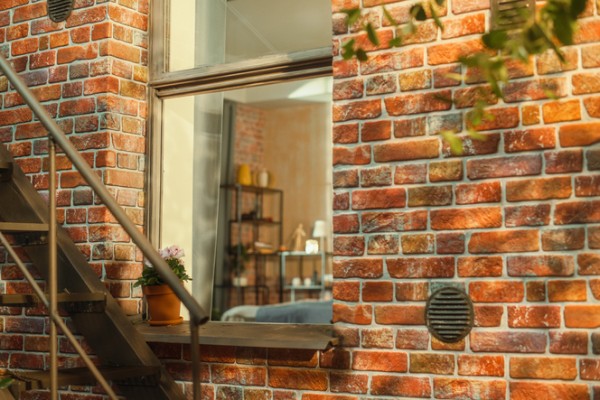
When you’re planning a renovation or extension and want serious performance in soundproofing, fire safety and thermal control, double brick walls—or a more advanced room-within-a-room (RWAR) system—can make a big difference.
Both options are well-suited to high-end renovations, home theatres, music studios or anywhere peace and comfort are a priority. But they’re also used in everyday homes for their lasting durability and low maintenance.
Here’s how they work and what you need to know before deciding if they’re right for your project.
What is a double brick wall?
Double brick walls—also called cavity brick walls—are made from two layers of brickwork (known as “leaves”) with a gap between them. This cavity is usually between 30mm and 50mm wide and can be left as an air space or filled with insulation.
The two brick layers are tied together with metal brick ties, and the cavity includes weep holes and damp-proof courses to manage moisture. This traditional wall system is especially common in older homes in Australia and is still favoured for its solid feel, high fire resistance and long lifespan.
If you’re retaining or restoring a load-bearing wall, or designing a new addition with high acoustic performance, double brick is worth considering.
Thermal and acoustic benefits
One of the biggest reasons renovators opt for double brick is the thermal mass. The bricks absorb heat during the day and release it slowly at night, helping to regulate indoor temperatures and reduce energy use. This can contribute to improved thermal performance across all seasons.
The system also excels at sound insulation. Even without added insulation, the density and cavity structure help achieve Rw ratings over 50. With acoustic insulation in the cavity, you can push performance higher—especially important if you’re designing for privacy or noise control.
For even better results, a double brick wall can be paired with a room-within-a-room (RWAR) system, where an independent internal frame is built with its own linings and insulation. This approach is often used in recording studios and home cinemas, but is just as useful in homes close to busy roads or in multi-generational households.
Fire safety and compliance
Because bricks are non-combustible, double brick walls are naturally fire-resistant. This makes them an ideal choice for separating living spaces in dual occupancies, or between homes and garages. When built to code and properly detailed, double brick walls can achieve high fire resistance levels (FRLs) under the National Construction Code.
If your renovation involves shared walls or party walls, this type of construction also helps with compliance for both fire and acoustic separation.
What does a double brick wall include?
Here’s what a typical double brick wall construction might look like:
| Component | Detail |
|---|---|
| Outer leaf | 90–110mm brickwork |
| Cavity | 30–50mm air gap or filled with insulation; includes weep holes and DPC |
| Inner leaf | 90–110mm brickwork |
| Ties | Galvanised brick ties spaced according to Australian Standards |
| Insulation | Acoustic batts, loose-fill, or pumped-in cavity foam |
| Interior finish | Usually render or plasterboard linings |
For even greater acoustic separation, RWAR setups add an internal stud wall—separated from the brickwork—to avoid sound “flanking” through structure.
When to consider RWAR
A room-within-a-room system goes a step further by decoupling the internal space from the external wall. This breaks sound paths, especially for low-frequency vibrations, and allows for multiple layers of acoustic insulation.
You might consider RWAR construction if:
- You’re building a home recording studio, media room or music practice space
- Your home is near a railway, airport or major road
- You’re renovating a double brick house and want to improve internal sound separation
In an RWAR setup, the internal walls are built as independent frames lined with acoustic-rated plasterboard, and the cavity between the frame and brick wall is filled with insulation. Doors and glazing can also be acoustically treated for full effect.
Construction tips
If you’re building or modifying double brick walls:
- Ensure weep holes and damp-proof courses are in place to manage moisture
- Keep cavities clear and clean during construction
- Use quality bricks and mortar for long-term durability
- Follow tie spacing rules to meet structural requirements
- Consider expansion joints to allow for brick movement and avoid cracking
If you’re retrofitting RWAR into an existing double brick home, make sure your builder understands acoustic detailing—gaps, penetrations and air leaks can undermine the whole system.
Should I use double brick in my renovation?
Double brick walls are ideal if you’re looking for a low-maintenance structure with excellent thermal and acoustic performance. They’re more costly and labour-intensive than timber-framed walls, but they deliver long-term value.
Pairing double brick with an RWAR system can deliver studio-quality sound isolation—perfect for inner-city homes or spaces where peace and quiet are essential.
If you’re unsure whether double brick or RWAR is right for your home, speak to your designer or builder early in the process. It’s much easier to make these decisions at the planning stage than to retrofit solutions later.

